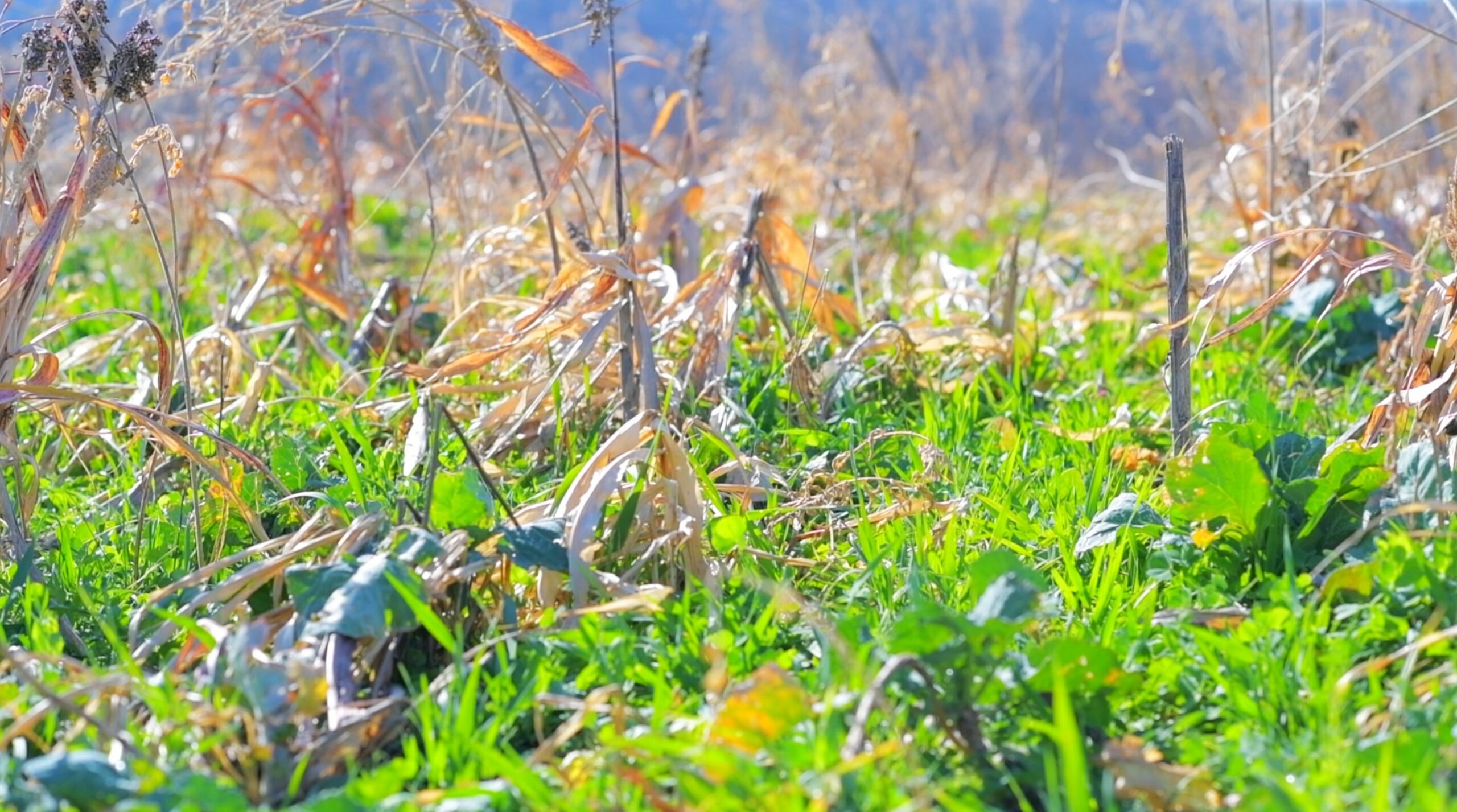
Do you value your soil? If you do and want to improve it, soil cover or armor is essential. Soil cover offers the same protection to soil as a spacesuit does to an astronaut in space. It provides an environment that protects and allows life to flourish even in harsh conditions. Soil cover is an investment that makes soil more resilient during extreme weather events. Drought, flood, heat, and cold can all be buffered by a properly covered soil.
On our dryland Kansas farm/ranch we use cover to feed both our above ground livestock (cattle) and our below ground livestock (microbes). If you are grazing livestock, it is important to leave plenty of residue, not only to armor and protect the soil but also as food for the microbes. Don’t be afraid to “waste” grazing material. As the picture shows, residue feeds the soil and then soil feeds the livestock! Soil residue also buffers soil temperatures, keeping them cooler during the summer and warmer in the winter, allowing microbial life to stay alive and working longer.
On our operation we see dry weather more often than not. While it may sound counterintuitive, I look at having something growing and producing cover and residue as an essential part of our strategy to combat drought. I never have found that fallow improved our soil, nor did I get a check for the banking of soil moisture, so I choose to fill my fallow periods with something growing. I am not saying that just seeding random crops is a good idea, but rather be a student of the soil. Dig some holes and see what your soil needs and then plant with a purpose and design a mix of plants that will help improve your soil for future crops.
Good soil cover limits evaporation forces such as the sun and the ever-present wind found here on the Great Plains. You cannot make it rain more during a drought, but you can limit how much moisture leaves your fields from the sun and wind. Good soil cover is like armor, protecting bare soil from sprouting weeds which saves money, time, and moisture. A diverse mix of plants will release root exudates (sugars) into the soil to feed the microbes which are working to create soil aggregation (glues) to keep our soil ready for when we do receive rain.
In the wetter years, soil cover limits the impact of raindrops hitting my soil. It is estimated that raindrops can hit a soil at 90 miles per hour (same impact as hitting it with a sledge hammer). When this happens, small particles of soil are dislodged and plug up the soil pores and prevents water infiltration. Nothing is more heartbreaking to a dryland farmer to see fast-flowing water rushing off fields when rain cannot infiltrate the soil…except maybe the soil loss from erosion that is caused by this! Proper soil cover, coupled with both living and decaying roots, keeps the soil pore space open and allows moisture to be infiltrated deep into the subsoil to be stored for future crops.
Just as an astronaut would never go into space without his protective suit and a knight would never go into battle without their protective armor, you should never farm without the protective cover your soil needs. Soil cover is an investment in the future productivity of your soil resource!
Written by:
Michael Thompson
Almena, Kansas
Thompson Farm & Ranch
Michael is a farmer and rancher in both Kansas and Nebraska and is a passionate Regenerative Agriculture spokesman. He also serves as president of the Colorado Conservation Tillage Association and is very involved in educating people about Soil Health principles.
Find this article in our 6th Edition Soil Health Resource Guide!